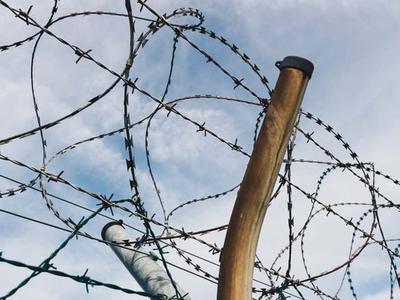
How Can Law Enforcement Leverage AI for Criminal Investigations?
Ben Gancz, CEO and Founder of Qumodo
22 January, 2019
CameraForensics

Modern slavery is happening on a massive scale today, affecting some 40.3 million people worldwide. And yet, it remains notoriously difficult to detect. Though these crimes often occur in plain sight – nail bars, car washes, hotels or building sites are common locations – victims of forced labour or domestic servitude may be locked away overnight.
As businesses and governments continue to grapple with these challenges, technology has been playing its part in advancing the detection of modern slavery, helping law enforcement to locate victims of these crimes.
What? The Unseen App is a tool to simplify reporting modern slavery in the UK.
Why? UK Charity Unseen, who operate the national Modern Slavery Helpline, has released an app with the aim of freeing more victims of slavery and trafficking.
How? The app provides an easy-to-follow guide to spotting the signs of modern slavery and makes it simply to report suspected crimes.
“Traffickers are using ever-more sophisticated technology to control and exploit their victims. It is crucial that those of us combating modern slavery innovate too. Whether that is technology for businesses to map their supply chains, or an app for everyone to have in their pocket at the nail bar, car wash or takeaway, this isn’t just a gimmick, it’s an essential part of the fight to eradicate slavery.”
- Andrew Wallis OBE, CEO of Unseen
What? A new international collaborative initiative, Tech Against Trafficking, was launched in June 2018.
Why? To unite tech and anti-slavery experts in the fight against human trafficking.
How? By sharing research and best practices, this coalition will bring together the knowledge of over 200 anti-trafficking tools and experts in the field of modern slavery.
Perpetrators of modern slavery thrive when investigators lack sufficient information to detect and locate their victims. Data exchange and technology partnerships such as Tech Against Trafficking is an effective way to increase the risk to trafficking offenders and reduce rates of modern slavery worldwide.
Find out more about the impact of human trafficking
What? A group of American researchers have created a public dataset of more than one million images from 50,000 hotels, since hotels are very typically used by traffickers to hold victims.
Why? To help law enforcement agents locate and rescue the victims involved in hotel-based trafficking crimes.
How? By using the Hotels-50K dataset, researchers plan to teach neural networks to identify specific hotels from the image of a trafficking victim’s online ad.
“Our approach to determining the hotel in images of hotel rooms is to train a deep convolutional neural network. This produce a short code for each image it sees, where images from the same hotel have very similar codes, and images from different hotels have very different codes. We then infer the hotel identity from the images with the most similar codes.”
- Abby Stylianou, First Author of the research paper Hotels-50K: A Global Hotel Recognition Dataset, interviewed by The Register.
What? Digital forensics tools like Griffeye, CameraForensics and Paliscope all employ big data to expedite investigations into crimes such as human trafficking.
Why? As data creation proliferates globally, trafficking cases increasingly involve the manual review of hundreds of thousands of files.
How? Digital forensics tools use machine learning and big data technologies to assess huge datasets and bring relevant material to the forefront so victims can be rescued more quickly, and perpetrators can be held accountable.
With law enforcement often having terabytes’ worth of digital evidence to sift through at one time (sometimes for only one case), digital forensics technology is a vital tool for automatically assessing and prioritising evidence. This type of big data driven technology is set to be a game changer in the battle against human trafficking. Once its adoption becomes widespread amongst law enforcement at local, national and international level, society stands a much better chance of reducing modern slavery offences.
RELATED: Big Data and the Prevention of Child Sexual Exploitation